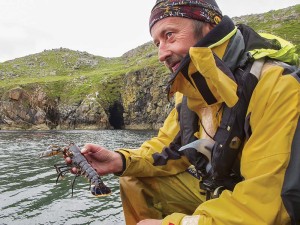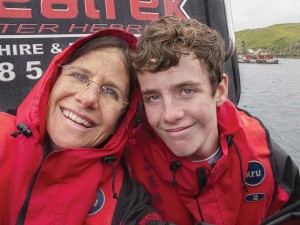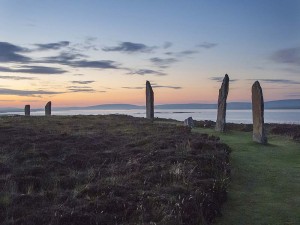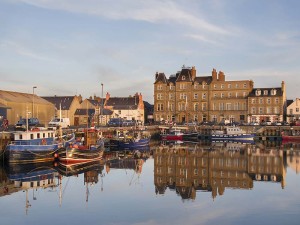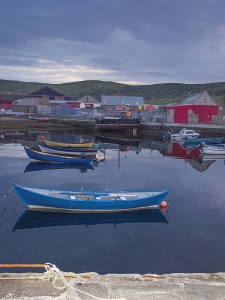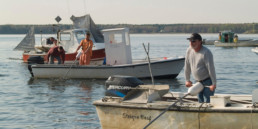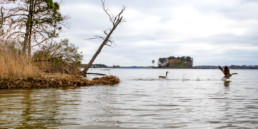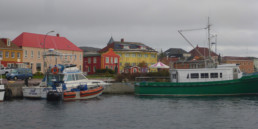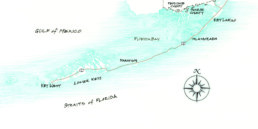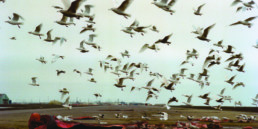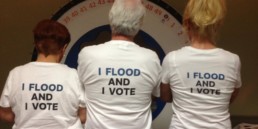What Scotland’s Islands Taught Me
Sally, our 17-year-old Scottish waitress, shyly replies to a question about the logistics of island education.
“It takes an hour and a half on the school bus to get from my house to my school,” she says, taking a moment between customers at this tiny inn in a remote part of the Isle of Lewis. I ask about the 1,200 students at the Nicolson Institute, the only high school on the island on the Outer Hebrides off the west coast of Scotland. Most will go on to “uni” (university), and many won’t return.
Sally isn’t sure what her plans are; she’s waiting for test results that will help determine her next step.
Bernie, the innkeeper, tends to two elderly couples having tea together and chats with me at the bar. A number of primary schools on the island have been shut down due to low enrollment, he tells me. Lobstering is more of a hobby than an industry, but some people still make a living at it. He proudly describes the 83-year-old lobsterman who caught the lobster for the leek and lobster soup I am enjoying.
My traveling companion devours a plate of salmon, likely from one of the fish farms we have passed on our long drive from the main town of Stornoway to this seemingly forgotten but strikingly beautiful part of Lewis called South Lochs. I tell the innkeeper that we are from Vinalhaven, an island off the coast of Maine, and he lights up, both because he has heard of Maine, and because of our island connection.
The conversation deepens. He shares with me that alcoholism rates here are among the highest in Scotland, and that the lack of economic opportunity is a significant problem. The sense of community is strong, though, and the land and seascapes are inspiring. He tells me that it’s a good place to live, in spite of the drawbacks. I know what he means; I feel the same way about my island.
STUDYING THE ISLAND CONNECTION
In the summer of 2013, I found myself in Scotland, accompanied by my younger son Liam, thanks to a grant to study island education there. The grant, The Island Connection, was from the Global Teachers Fellowship, a program of the Rural School and Community Trust which funds educational travel for rural teachers.
The idea for the trip originated with Karen Burns, then the Vinalhaven High School English teacher, and now the Island Institute’s community development director. The need for inspiration and perspective beyond our own island and school was the driving force behind our application.
Many of the Scottish Isles are not unlike Vinalhaven: geographically isolated, dependent on natural resources like fishing and granite and, increasingly, alternative energy, and challenged when it comes to sustaining small schools, whose students face limited access to higher education and an uncertain future.
How do they deal with these issues? What can we learn from the Scottish education system to bring back to our school? These were some of the questions we set out to answer.
Due to bureaucratic circumstances beyond our control, Karen was not able to go on the trip as originally planned, so arrangements were made to have Liam, my then-14-year-old son, travel with me instead. Seeing the Scottish Isles and island education from his perspective added a different dimension to the trip, and gave us a once-in-a-lifetime parent-child experience.
My conversation with Sally and Bernie on the Isle of Lewis came toward the end of our 16-day trip, which included stops on the Shetland and Orkney Islands, and the Outer Hebrides, as well as in the cities of Aberdeen, Inverness, and Edinburgh. Before the trip, I spent a great deal of time reaching out to Scottish educators of all sorts—from primary and secondary teachers and college professors to education administrators and government officials.
Because the trip was in July and August, the height of their summer holiday season, finding available teachers was somewhat of a challenge. Even so, I was able to set up a number of meetings ahead of time. I also learned a lot from talking to the proprietors of the various bed-and-breakfasts that we stayed at, and the locals we randomly encountered, like the folks at the inn on the Isle of Lewis.
Throughout the trip, the people I met were consistently polite, genuinely interested in helping me, and as curious about my island as I was about theirs. I began to understand the power of the island connection. Regardless of the name of the island or archipelago, we islanders share some fundamental realities that bind us together, whether we are from different countries and have just met, or have grown up together in families that have known each other for generations.
ISLAND-SMITTEN
I am a fool for islands. Almost every island I visit is my new favorite, and Shetland, the first Scottish island we visited, was no exception.
When we arrived, there were clear blue skies over breathtaking, treeless vistas, and sheep were everywhere. The distraction of the incredible scenery, together with my inexperience driving on the left, literally collided—into a stone wall that juts into the main road in the town of Lerwick. Within seconds, people were there to help us in what I came to know as the calm and friendly way of Scottish islanders.
Once it was clear that the accident was minor and that the only thing hurt was the rental car (and my pride), a sense of efficiency and almost amusement set in. The police officer assured me that the wall had been the victim of many other cars, and several of the bystanders shared their tales of right-side driving mishaps in Europe and the United States. The entire affair, including minimal paperwork, towing away the wrecked car, and renting a new car, was over in less than two hours.
OBSTACLE FUN
The town of Lerwick proved to be a most welcoming place. We set out exploring, starting with Fort Charlotte, a 16th-century fort up the hill from our B&B. Liam found some great places to do parkour. And much to his surprise, no one seemed to mind—or even notice.
Parkour is the physical discipline of training to overcome any obstacle within one’s path by adapting one’s movements to the environment. An emerging sport in the United States, parkour has been popular in European cities since the late 1980s. As is often the case with something new, parkour is sometimes misunderstood, and can look like a teenager up to no good.
In Scotland, even on the islands—hardly urban centers—parkour appears to be widely accepted. Liam added this to his list of good things about Scotland. Parkour is also an apt metaphor for island life. Unlike people who live on the mainland, islanders often lack the resources, or space, to get around or ignore problems. We have to literally overcome them.
Later on, we went to a tiny restaurant that served fish and chips, popular with both tourists and locals. I was reminded of the Harbor Gawker restaurant on Vinalhaven, which, on a busy summer evening, often has representation from nearly every island demographic, from babies to grandparents, year-rounders to summer residents and day-trippers.
Liam and I spied two fishermen and recognized them as local characters with many Vinalhaven counterparts. We felt a fascinating sense of being in a very recognizable yet completely different island setting, far from our island home but surrounded by people and places that seemed so familiar.
This was the first time we had seen the sun since arriving in Scotland three days earlier. I knew from the guidebooks that the sun can be particularly elusive in Shetland, so I continued my exploration of Lerwick after dinner. By now it was about 10 p.m., and the sun had been slowly setting for hours. The light was indescribably beautiful as I walked through various neighborhoods, eventually ending up at a working waterfront.
A huge cargo ship was being loaded at one pier, while tiny wooden boats rested peacefully nearby. From the community center, I heard music and cheers from a concert, and further on, the drunken hoots of barflies as they spilled out into the gorgeous night. I passed an elderly gentleman tending his flower garden. Even at this late hour, the town was alive with activity of all descriptions.
OIL PROFITS, COMMUNITY RESOURCES
As I made my way back to our B&B, I noticed the abundance of community resources prominently located throughout the town. One resource that stood out was called VAS (Voluntary Action Shetland), a Shetland-based clearinghouse of sorts. Their mission is to support volunteer organizations and promote volunteering in the community, with a vast number of associated local nonprofits, including mediation teams, emergency funding for community members, and counseling services. Having a centralized location and cohesive plan for the island’s nonprofits is something we on Vinalhaven have talked about for a long time.
One VAS organization in particular caught my eye. The Moving On Employment Project serves people over the age of 16 with barriers to employment. In addition to standard approaches like training and job skills development, this organization focuses on such problems as mental health issues, low motivation, and drug and alcohol abuse.
Another education-related organization I saw was called Train Shetland, part of a national vocational training program that is closely coordinated with Shetland College and area businesses. While meeting with local school officials the next day, I learned that Shetland’s wealth of community resources was due largely to the influx of North Sea oil money to the area since the late 1970s.This funding is changing, though, and it is unclear how Shetland’s communities will be affected as the country shifts to renewable energy sources. What is clear is that this is a very high-functioning island community that has made a tremendous investment in the health, well-being, and education of its people.
The cheerful and competent nature of the Shetlanders we first encountered when we “crashed” into town was again evident in the education meetings I had. More than in any other place we visited, Shetland educators were responsive, and went to great lengths to connect with me; this was especially so of Kate, an outstanding head teacher (similar to a teaching principal), who left her nearby holiday location to spend over two hours with me at the airport when flights were delayed due to fog.
I heard about some of the politics involved in the closure of small island primary schools, and about specific and sustained place-based curriculum initiatives with real-world applications in the local community. I also learned about life on some of the small outer islands, which I hope to visit in the future. One in particular, called Fetlar, with a tiny one-room school, sounded very much like Matinicus Island School.
I told her about some of the innovative technology-based approaches we’ve developed among the outer islands of Maine, with the help of the Island Institute, such as the TLC (Teaching and Learning Collaborative). I was again struck by the numerous similarities our islands and island educators share, and how much we can learn from each other.
ISLAND COMPETITION
There is a strong connection and sense of competition between the various Shetlands, Orkneys, and Outer and Inner Hebrides, and even among the islands and towns within each archipelago. We got to hear about this firsthand from Jean, an Orcadian teacher, and her 18-year-old daughter, Catriona, who invited us to visit them for dinner.
Scottish island students travel even longer distances than Maine islanders, by ferry and plane, to compete with each other in often-fierce sports rivalries. Academically, though, the Scottish system, which is based on the national Curriculum for Excellence, appears to unite educators, students, and parents in a common goal of high achievement and success.
I heard about the many ways that Scottish students’ learning needs are met. For example, some students in Orkney grow up on farms; at age 16, once they have proven a certain level of proficiency, they can choose to leave school to farm full-time. They don’t face the same stigma of “dropping out” that Maine islanders who leave high school to go lobster-fishing often face.
There is also a strong connection between island secondary schools and UHI (the University of the Highlands and Islands), a network of higher-education facilities with well-developed programs for all interest and ability levels, from basic skills to hairdressing to wave-energy engineering.
While in Orkney, we spent another day on the island of Shapinsay, about a 20-minute ferry ride from the town of Kirkwall. There we met Emma, the head teacher of the island’s primary school, who generously spent hours with us sharing school resources, answering my endless education questions, and giving us a driving tour of the island.
Shapinsay looks to be about as perfect as an island can get: a short ferry ride, and no trouble getting a car on or off (even in the summer); about 300 people year-round; a wonderful community feeling; a great little school; and beautiful scenery, with white, almost tropical-looking beaches. Here was my next new favorite island.
STANDING STONES
In addition to the excellent meetings we had with educators in the Orkneys, we also saw some spectacular sites. Because many of Orkney’s historic locales are large, archaeological ruins, they are always open, and we were able to visit some of them well after dinner. In fact, most nights, getting to bed before midnight was very difficult. It stays light for so long, and the twilight is so lovely, we just seemed to stay out in it. Being at the ancient ceremonial rings of The Ring of Brodgar and The Standing Stones of Stenness at night, with sheep grazing right next to the monuments, was very special. The power of these places was palpable, and is an experience that neither Liam nor I will soon forget.
The desire for inspiration and perspective that was the driving force behind this trip was realized almost to the point of excess. In the weeks and months since the trip, I have had the opportunity to give many presentations and now to write this article, which only begins to capture our experiences on the Scottish Isles.
The value and privilege of traveling with my son is something I would like to make possible for more island families. And the pleasure of discovering and learning from so many island educators who are just as passionate about island education as I am is something more island teachers should experience.
I have gained so much—but more than anything else, I have learned the true depth of the island connection of people and place. The value of this trip—as an islander, an educator, and a parent—will inform and inspire me, now and well into the future.

